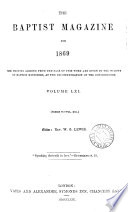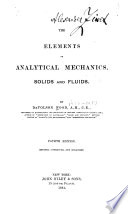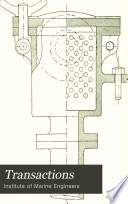 | Elias Loomis - 1858 - 374 pages
...in the form of Mechanical Axioms, or laws of motion. They are the following: LAW I. — Every body continues in its state of rest, or of uniform motion in a straight line, unless acted upon by some external force. Matter in its unorganized state is inanimate or inert. It can not... | |
 | Marcius Willson - 1860 - 368 pages
...three principles of motion, known as Newton's Laws. Can you tell me the first ? II. Frank. "Every body continues in its state of rest, or of uniform motion in a straight line, unless acted upon by some externals force." This, I suppose, means that a body at rest can not put itself... | |
 | 1869 - 844 pages
...of its atoms shall bear that relation to other " elements " which we call its chemical properties. The first law of motion is, that a body continues...without. The second law is that the change of motion is proportional to the force impressed, and is produced in the same right line in which that force acts.... | |
 | De Volson Wood - 1876 - 500 pages
...principles of motion in the form of three laws or mechanical axioms; as follows : — 1st. Every body continues in its state of rest or of uniform motion in a straight line unless acted upon by some external force. ' 2d. Change of motion is proportional to the force impressed, and... | |
 | Elroy McKendree Avery - 1878 - 480 pages
...the history of physical science that they ought to be remembered by every student : (1.) Every body continues in its state of rest or of uniform motion in a straight line unless compelled to change that state by an external force. (2.) Every motion or change of motion is in the... | |
 | Elroy McKendree Avery - 1880 - 478 pages
...the history of physical science that they ought to be remembered by every student : (1.) Every body continues in its state of rest or of uniform motion in a straight line unless compelled to change that state by an external force. (%.) Every motion or change of motion is in the... | |
 | Joshua Joseph J. Doherty - 1881 - 240 pages
...We shall here repeat these laws and make some general remarks upon them. First Law. — Every body continues in its state of rest or of uniform motion in a straight line unless compelled by impressed forces to change that state. Second Law. — The change in the quantity of motion... | |
 | De Volson Wood - 1882 - 276 pages
...principles of motion in the form of three laws or mechanical . axioms ; as follows : — 1st. Every body continues in its state of rest or of uniform motion in a straight line unless acted upon by some external force. 2d. Change of motion is proportional to the force impressed, and... | |
 | 1902 - 730 pages
...the structure of the Leyden jar, and explain how you charge it. An-swers in Physics. 1. Every body continues in its state of rest or of uniform motion in a straight line unless compelled to change that state by an external force. Every motion or change of motion is in the direction... | |
 | Institute of Marine Engineers - 1889 - 512 pages
...govern it, and they are Tri-unity also, and I quote them seriatum : — First Lcnr. — Every body continues in its state of rest or of uniform motion in a straight line, unless acted on by some external force to change that state. Second Laic . — Change of motion is proportional... | |
| |